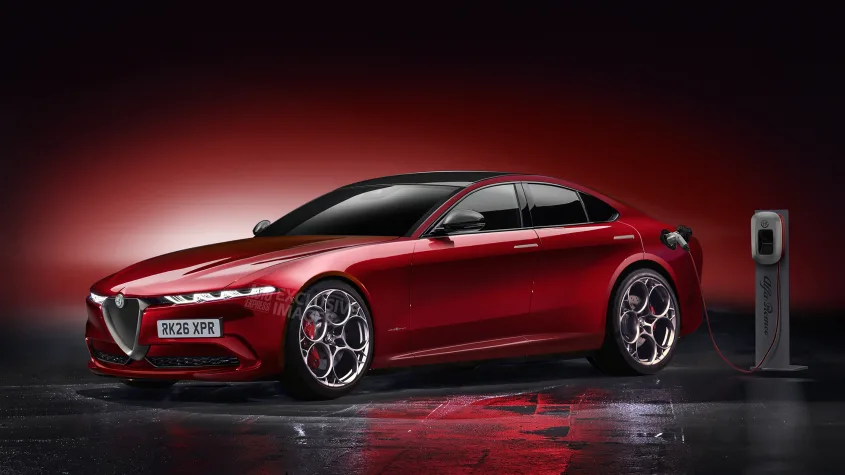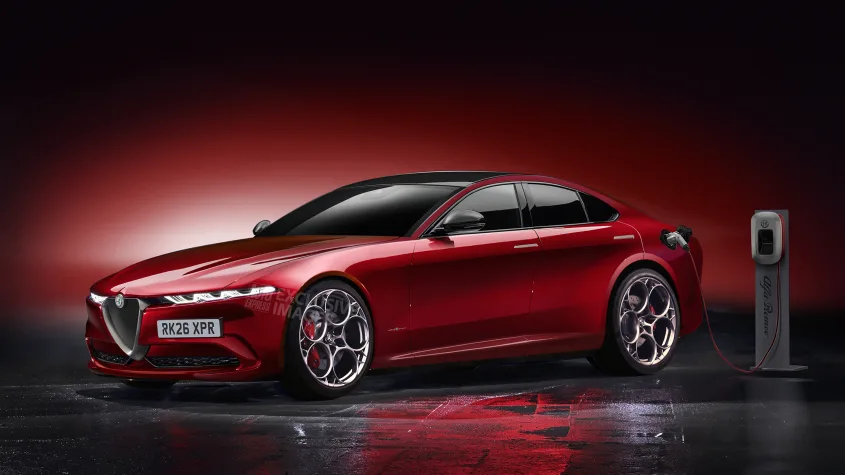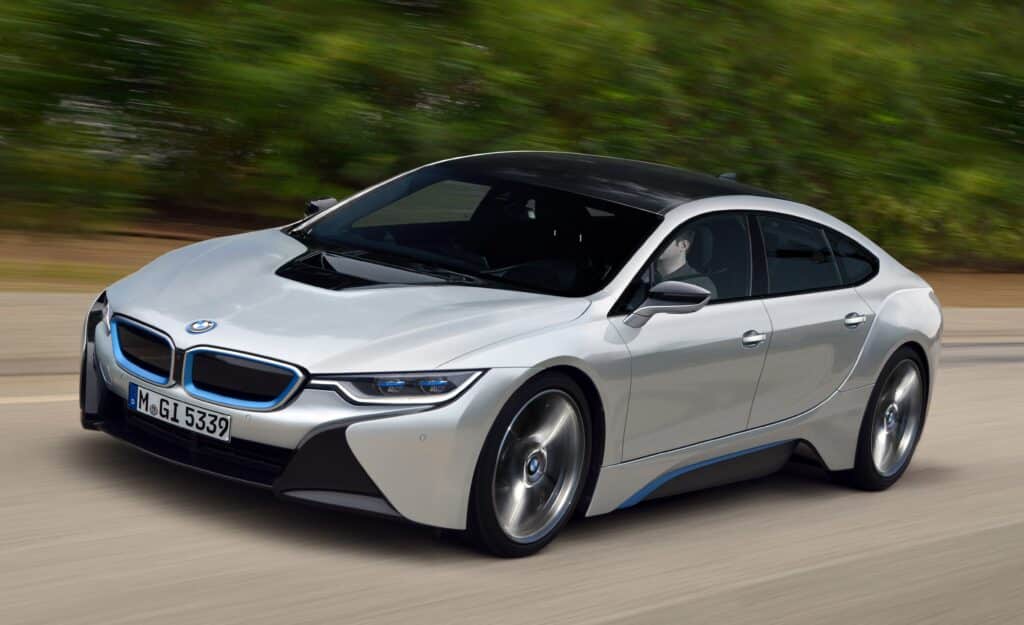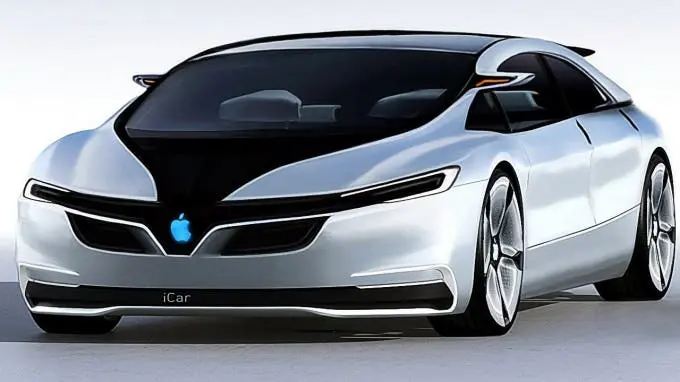
Rechargd.com is reader supported. We may collect a share of sales or other compensation from the links on this page. As an Amazon Associate, we earn from qualifying purchases.
Major automakers like Audi, BMW, Chevrolet, Ford, Hyundai, Kia, Mercedes-Benz, Tesla, and Volkswagen have announced plans to launch dozens of new electric vehicle (EV) models over the next few years. These new electric vehicles range from affordable compact cars and mainstream SUVs to high-performance sports cars and luxury sedans. Most will offer extended range capabilities between 250-400+ miles on a single charge. The increase in electric vehicles is expected to persist well beyond 2024, with even more tempting options around the corner.
The Exciting Future of Electric Vehicles:
Some of the electric vehicles that are expected to launch in the coming years include:
1.Alfa Romeo Giulia EV (Expected 2025)

Alfa Romeo has confirmed that the next-generation 2025 Giulia will switch to a fully electric powertrain built on Stellantis’ STLA Large platform. The EV sedan will offer up to 500 miles of range with 800V ultra-fast charging capabilities. It aims to preserve the nimble handling and sporty character that the Giulia is known for even as it goes electric.
Three variants are planned: a 350 horsepower base rear-wheel drive model, a punchier 800 horsepower all-wheel drive Veloce, and a range-topping Quadrifoglio pumping out over 1,000 horsepower. The Giulia EV promises up to 500 miles of driving range from its floor-mounted battery pack.
However, the final dimensions are still under wraps; we expect a sleeker, more aggressively raked exterior design with a sweeping hatchback or shooting brake-style rear end. Inside, drivers can look forward to larger touchscreens and advanced driver assist systems befitting a flagship luxury EV.
2.BMW i5 M (Expected: 2026)

The forthcoming 2026 BMW i5 M represents the performance-oriented variant of the automaker’s newest electric sedan. Building on the standard i5 model, which already has enhanced driving dynamics tailored for track use, the i5 M cranks further. Its quad-motor powertrain will generate a staggering 1,136 horsepower, enabling a 0-60 mph time under 2.5 seconds.
Advanced torque vectoring technology will provide incredible cornering ability and allow controlled drifting. The aggressive exterior styling fits BMW M models, with a lowered suspension, flared fenders, and trademark M division touches.
However, not a full-fledged supercar, the BMW i5 M combines sports car acceleration with executive sedan practicality. It increases the exciting possibilities emerging as electrification extends into the high-performance realm. The advanced drive-train and technology packed into this electric BMW flagship ensure it will turn heads when deliveries begin in 2026.
3.2025 Cadillac Vistiq (Expected: Early 2025)
The 2025 Cadillac Vistiq slots into the brand’s growing EV lineup as a midsize three-row SUV, likely similar in size to the gas-powered XT6. It adopts Cadillac’s latest electric styling with slim LED accents, a closed-off grille, and a sharply creased profile. Rumors suggest the Vistiq will use a dual-motor AWD powertrain producing around 500 horsepower, like the top Lyriq model.
While full details remain unannounced, the Vistiq aims to provide a spacious, luxurious option for families seeking an electric alternative to gas-powered counterparts. Combined with the Lyriq, Celestiq sedan, Escalade IQ, and upcoming Optiq, the electric Vistiq fortifies Cadillac’s ambitions to lead American luxury brands in the EV transition. It hits dealerships in early 2025 as a well-equipped but more affordable foil to the $340,000 Celestiq flagship.
4.Apple Titan EV (Expected: 2026) Discontinued for now.

Apple’s Project Titan electric vehicle initiative has a long development history stretching back nearly a decade to around 2014. Originally, Project Titan aimed to design a fully autonomous, self-driving electric car to rival company offerings like Tesla. However, over the years, Apple has faced multiple strategy shifts, leadership changes, and layoffs that have redirected and delayed the project.
As of 2024, the latest status indicates the Apple car will arrive no earlier than 2028, over two years behind the initial 2026 target. Unable to achieve full self-driving capability, Apple has scaled back plans to include instead more basic advanced driver assistance features requiring a steering wheel and pedals. The goal is to achieve level 2+ autonomy akin to Tesla’s Autopilot system.
Apple has also moved away from early experiments with a pod-like exterior shape in favor of a more conventional, sleek sports sedan design fitting brand expectations. A $100,000-or-less price tag is expected to broaden appeal beyond luxury models. Fast charging, 350+ miles of range, and sporty driving dynamics will aim to match competitor offerings.
However, this still leaves uncertainty around which automaker will ultimately supply the electric vehicle platform and assemble Apple’s debut car.
5.Tesla Cybercar (Expected: 2026)
There is little information about Tesla’s supposed Cybercar model beyond rumors of it being an affordable subcompact hatchback or sedan to complement the automaker’s lineup. As Tesla has focused heavily on ramping up Cybertruck production in recent years, speculation died down on a smaller Cybercar. However, a budget-friendly Tesla could find appeal with mainstream brands like Honda partnering with Sony on new electric vehicles.
Expected Tesla hallmarks like sporty performance, advanced driver assistance systems, and excellent range would stand out in a segment lacking comparable EVs. Moreover, its supercharging network provides an edge. If Tesla were to revive Cybercar development, an under $30,000 starting price could entice buyers reluctant to pay premium prices for the Model 3 and Model Y. Thus, a 2026 launch would position the Cybercar to draw interest from EV early adopters.
6.Tesla Roadster (Expected 2025)
The upcoming Tesla Roadster revives Tesla’s first electric vehicle nameplate from 2008. As the fastest production car, Tesla claims staggering performance specifications for the all-new 2025 Roadster.
Its tri-motor powertrain will enable acceleration from 0-60 mph in just 1.1 seconds, which is on par with the world’s quickest supercars. Top speed is expected to exceed 250 mph. While such extreme performance numbers grab headlines, the Roadster will also showcase Tesla’s latest innovations in battery technology, materials science, aerodynamics, and more.
Moreover, it provides a glimpse of the electrified future for high-performance vehicles. The 2025 Tesla Roadster carries on the ethos of the original model that helped catalyze the EV revolution. It shows Tesla’s ability to push boundaries and redefine electric vehicle capabilities in the years ahead.
Tesla now has test driving centers that are “unmanned” for hassle-free test drives.
7.GMC Sierra EV (Expected: 2024 Summer)
GMC is entering the high-performance EV truck segment with the 2024 Sierra EV. As an electric variant of GMC’s best-selling Sierra pickup, it promises comparable capability and styling plus the benefits of an electric powertrain.
The range-topping Sierra EV Denali Edition 1 outputs 754 horsepower, enabling 0-60 mph acceleration under 4.5 seconds – on par with some sports cars. It also offers hands-free Super Cruise driving assistance and an advanced infotainment system. Starting at nearly $109,000, the limited Denali Edition 1 aims for well-heeled early adopters.
However, GMC plans more affordable and higher-production Sierra EV models in 2025, which should broaden appeal to mainstream truck buyers. With brands like Ford and Rivian debuting electric pickups, the Sierra EV brings GMC into the zero-emissions truck future while upholding the brand’s reputation for premium utility vehicles.
8.Fisker Ronin (Expected: 2024)
The Fisker Ronin is the California automaker’s most ambitious limited-production halo supercar. Slated to launch in late 2025 with a $385,000 price tag, it combines head-turning style with groundbreaking electric vehicle capabilities.
Its quad-motor AWD powertrain promises over 1,000 horsepower, enabling a 2-second 0-60 mph time. Even more impressive is the targeted 600 miles of driving range from an advanced battery integrated into the car’s structure—surpassing any production EV today.
With seating for five, a lightweight carbon fiber body, and fast charging support, the Ronin aims to redefine environmentally sustainable grand touring.
9.Chevrolet Corvette EV and SUV (Expected: 2025)
Chevrolet is reportedly developing an electric SUV variant of its iconic Corvette sports car. As part of a broader Corvette sub-brand expansion, the SUV aims to translate the Corvette’s sleek styling and performance pedigree into a more practical, family-friendly package.
We could see multiple powertrain options ranging from a turbocharged four-cylinder to a high-output electric motor setup with over 500 horsepower. An adaptive air suspension and torque vectoring technology should provide agile, sports car-like handling.
Moreover, the Corvette SUV will target premium SUVs from Porsche, BMW M, and Mercedes-AMG models. While an official debut is likely a couple of years away, the electric Corvette SUV represents Chevy seizing an opportunity to leverage the legendary ‘Vette image into new segments.
10.Chrysler EV Crossover (Expected: 2025)
Chrysler’s upcoming electric crossover is expected to launch in 2025. It will differ from the Airflow concept vehicle. The EV crossover should have a driving range of around 400 miles per charge. It will likely offer advanced driver assistance features and may allow partially automated driving.
As Chrysler’s first electric SUV, it aims to compete with the popular Ford Mustang Mach-E. Having a large battery pack and driver aids can help attract customers. Chrysler plans for this to be among its first fully electric models as it works towards an all-EV lineup by 2028. The automaker currently only offers the Pacifica plug-in minivan. Their new electric SUV should expand their electric offerings and cater to buyers looking for an electrified family crossover vehicle.
Conclusion
The ongoing trend of vehicle electrification appears inevitable as more automakers commit to emission reduction targets and ramp up EV manufacturing and infrastructure investments. Beyond 2024, the EV ecosystem will expand quickly as technology improvements unlock new performance thresholds and enable further market segments. For mainstream buyers and EV enthusiasts alike, the expanding selection of models in the coming years will offer exciting alternatives to gas-powered incumbent vehicles across nearly every vehicle category. As battery costs decrease and charging networks grow, EVs are approaching their inflection point to enter the mainstream. Thus, the next few years promise to bring phenomenal choice and innovation, making electric vehicles more viable and tempting than ever before.
